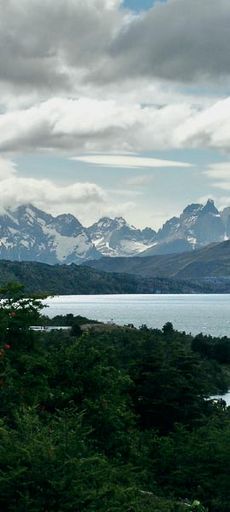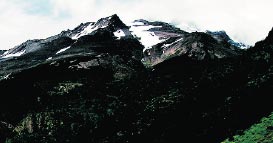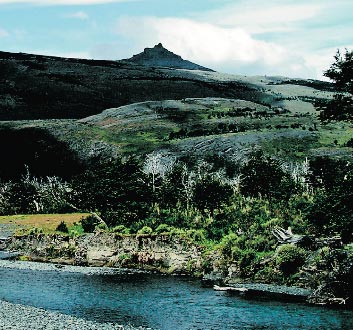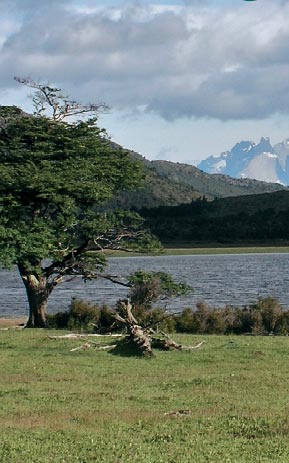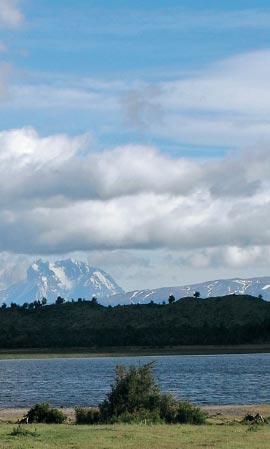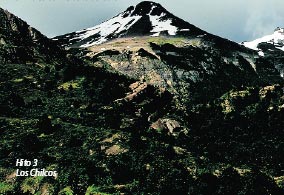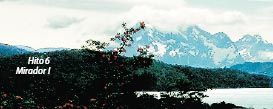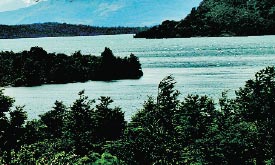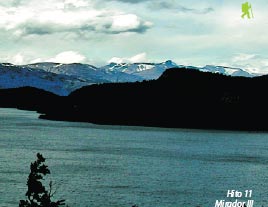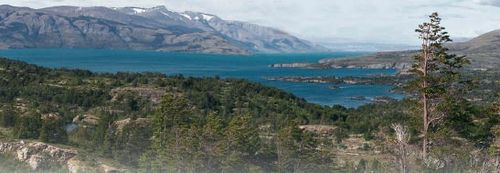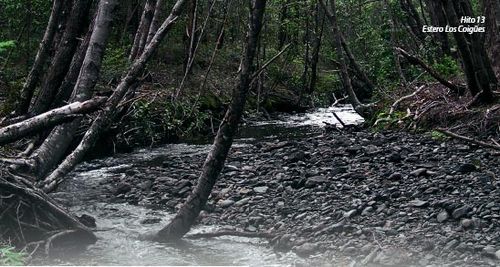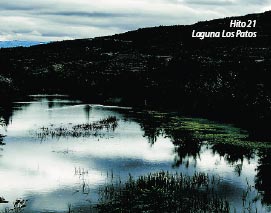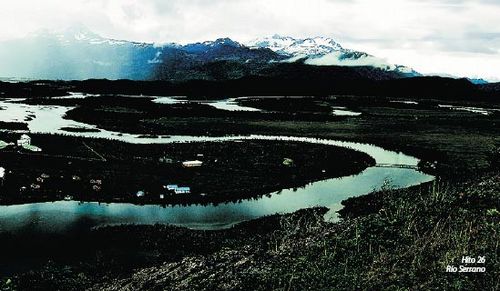Diferencia entre revisiones de «ENG:Milodón»
| (No se muestran 22 ediciones intermedias de 4 usuarios) | |||
| Línea 1: | Línea 1: | ||
| + | [[ES:Milodón]] | ||
{{Indexed}} | {{Indexed}} | ||
{{Rutas Patrimoniales english}} | {{Rutas Patrimoniales english}} | ||
| − | {{ | + | {{RutaForme |
|Actividad=Trekking | |Actividad=Trekking | ||
| + | |||
|País=Chile | |País=Chile | ||
|CiudadesChile=Puerto Natales | |CiudadesChile=Puerto Natales | ||
|BellezaEscenica=Mediana | |BellezaEscenica=Mediana | ||
|Atractivos=Vistas panorámicas, Formación Geológica | |Atractivos=Vistas panorámicas, Formación Geológica | ||
| − | | | + | |Duracion=2 días |
| − | + | Algo Exigente | |
| − | + | ||
|Sendero=Siempre Claro | |Sendero=Siempre Claro | ||
|Señalizacion=Adecuado | |Señalizacion=Adecuado | ||
|Infraestructura=Inexistente | |Infraestructura=Inexistente | ||
| − | | | + | |
| − | | | + | |ComparteIdayRetorno=Cruce |
| − | | | + | |Latitud1=-51,441639 |
| + | |Longitud1=-72,748650 | ||
| + | |Distancia=0 | ||
| + | |||
| + | |MetrosAscenso= | ||
| + | |MetrosDescenso= | ||
| + | |Comentarios distancia= | ||
| + | |AltitudMedia= | ||
|Primer Autor=Rutas Patrimoniales | |Primer Autor=Rutas Patrimoniales | ||
|Imágen Principal=Milodon-g4.jpg | |Imágen Principal=Milodon-g4.jpg | ||
|KMLZ=Milodon.kmz | |KMLZ=Milodon.kmz | ||
| − | |ComentariosMapa=Trekking ruta Milodón | + | |ComentariosMapa=Trekking ruta Milodón {{aportar track}} |
| + | |ComparteIdayRetorno=Ida y Retorno por la misma ruta | ||
|TipoDeMap=HYBRID | |TipoDeMap=HYBRID | ||
}} | }} | ||
| Línea 27: | Línea 37: | ||
From November to March. | From November to March. | ||
| − | [[ | + | [[File:Milodon-g3.jpg|thumb|400px|right]] |
| − | [[ | + | [[File:Milodon-g2.jpg|thumb|400px|right]] |
| − | [[ | + | [[File:Milodon-g1.jpg|thumb|400px|right]] |
| − | [[ | + | [[File:Milodon-g5.jpg|thumb|400px|right]] |
| Línea 80: | Línea 90: | ||
<span style="color:red">Walk by well delimitated path in the western sector of the Sofia lake, on lands with woods and prairies, flat to slightly inclined. | <span style="color:red">Walk by well delimitated path in the western sector of the Sofia lake, on lands with woods and prairies, flat to slightly inclined. | ||
| − | [[ | + | [[File:Milodon-tramo1a.jpg|thumb|500px|right]] |
| − | [[ | + | [[File:Milodon-tramo1b.jpg|thumb|500px|right]] |
This Heritage Route starts after leaving public road in a site allowing to cross a fence parallel to the road. There, you will see a welcome sign. Start walking by an interesting Ñirres forest (Nothofagus antarctica), intermingled with beautiful Calafates (Magellan Barberry - Berberis buxifolia), a typical specie of Magallanes region. By 1895, a German settler, Hermann Eberhard, who lived near Puerto Natales, found in these valleys some pieces of skin of an animal that was then unknown, the Milodón (Mylodón darwinii listai). This herbivore mammal, of the genus of the gound-sloths, similar to a big bear, was twice as tall as a human being. Reasons of this mammal extinction, 10 to 13 thousands of years ago, are not yet clear, being possibly due to hunting by the first men who lived in the zone, and to climate changes that altered vegetation cover of these valleys.<br> | This Heritage Route starts after leaving public road in a site allowing to cross a fence parallel to the road. There, you will see a welcome sign. Start walking by an interesting Ñirres forest (Nothofagus antarctica), intermingled with beautiful Calafates (Magellan Barberry - Berberis buxifolia), a typical specie of Magallanes region. By 1895, a German settler, Hermann Eberhard, who lived near Puerto Natales, found in these valleys some pieces of skin of an animal that was then unknown, the Milodón (Mylodón darwinii listai). This herbivore mammal, of the genus of the gound-sloths, similar to a big bear, was twice as tall as a human being. Reasons of this mammal extinction, 10 to 13 thousands of years ago, are not yet clear, being possibly due to hunting by the first men who lived in the zone, and to climate changes that altered vegetation cover of these valleys.<br> | ||
| Línea 126: | Línea 136: | ||
<span style="color:red">Walk by well delimitated path in the western sector of Porteño lake, on lands with woods, thicket and prairies, flat to inclined. | <span style="color:red">Walk by well delimitated path in the western sector of Porteño lake, on lands with woods, thicket and prairies, flat to inclined. | ||
| − | [[ | + | [[File:Milodon-tramo2aa.jpg|thumb|500px|right]] |
| − | [[ | + | [[File:Milodon-tramo2a.jpg|thumb|500px|right]] |
| − | [[ | + | [[File:Milodon-tramo2b.jpg|thumb|500px|right]] |
| − | [[ | + | [[File:Milodon-tramo2c.jpg|thumb|500px|right]] |
| − | Immediately after passing by the vehicle bridge allowing to cross Ventisquero river, cross the fence, always following the track by the western strip, parallel to the public road. Start of this second segment is signaled and identified with an interpretative table. The track is here relatively close to the vehicle road and usually corresponds to muddy lands, although | + | Immediately after passing by the vehicle bridge allowing to cross Ventisquero river, cross the fence, always following the track by the western strip, parallel to the public road. Start of this second segment is signaled and identified with an interpretative table. The track is here relatively close to the vehicle road and usually corresponds to muddy lands, although as you may see works have been done to make the tour easier. Heading north, you will get to a clear strip among a dense wood until arriving to a rustic gate. Here, you may see a typical Liquen of Nothofagus woods, the so-called beard of mount beard (Usnea barbata), which is used to dye wool and for its antibiotic properties.<br> |
After passing the rustic gate, head north around 500 meters until arriving to some prairies where beautiful views of Macizo del Paine may be seen in sunny days. By a little pond, you will find [[Hitos Milodon#Hito 6 / Guidepost 6|Guidepost Nr. 6]], the first mirador of this route, providing majestic views of this mountain range.<br> | After passing the rustic gate, head north around 500 meters until arriving to some prairies where beautiful views of Macizo del Paine may be seen in sunny days. By a little pond, you will find [[Hitos Milodon#Hito 6 / Guidepost 6|Guidepost Nr. 6]], the first mirador of this route, providing majestic views of this mountain range.<br> | ||
| Línea 167: | Línea 177: | ||
When you go inside through the small stream that allows crossing these hills at your left you will see that surrounding hillsides are very irregular. Originated from sedimentary rocks (rocks forming from pieces and materials, minerals and organic elements, coming from decomposition and deposit of other materials), these hills have experienced a series of fractures, overturns and slidings of large blocks of rocks forming them from high to low zones. The above has generated a stepped and abrupt landscape with zones of diverse vegetation development: ripe forests, young forests, thickets, only prairie and areas with naked rock. When leaving the stream, you will have a splendid view of the Tenerife hill and as background Macizo del Paine to the north. We are in [[Hitos Milodon#Hito 10 / Guidepost 10|Guidepost Nr. 10]]. During the next 1,500 m, approximately, you should climb and go down slopes between coigües, ñirres (Nothofagus antarctica), Chaura (Gaultheria mucrata) and some Notros. In this part, path is clear, you can walk safe. While you keep walking, you will find a small brook. Refill your canteen, since you will not find water until you arrive to Rincón River, approximately at about 3,000 meters ahead.<br> | When you go inside through the small stream that allows crossing these hills at your left you will see that surrounding hillsides are very irregular. Originated from sedimentary rocks (rocks forming from pieces and materials, minerals and organic elements, coming from decomposition and deposit of other materials), these hills have experienced a series of fractures, overturns and slidings of large blocks of rocks forming them from high to low zones. The above has generated a stepped and abrupt landscape with zones of diverse vegetation development: ripe forests, young forests, thickets, only prairie and areas with naked rock. When leaving the stream, you will have a splendid view of the Tenerife hill and as background Macizo del Paine to the north. We are in [[Hitos Milodon#Hito 10 / Guidepost 10|Guidepost Nr. 10]]. During the next 1,500 m, approximately, you should climb and go down slopes between coigües, ñirres (Nothofagus antarctica), Chaura (Gaultheria mucrata) and some Notros. In this part, path is clear, you can walk safe. While you keep walking, you will find a small brook. Refill your canteen, since you will not find water until you arrive to Rincón River, approximately at about 3,000 meters ahead.<br> | ||
| − | Continuing with the tour, the path passes by a zone with a thin vegetable layer, with the presence ñirres (Nothofagus antarctica), Notro (Embothrium coccineum) and coigüe (Nothofagus betuloides) young forests. Go ahead and you will find a beautiful and little wetland with a pond in its center. Good view to Tenerife hill (1,670 m.a.s.l.) and of some tourism cabins located by El Rincón river outlet. Porteño lake will always flow to your right and | + | Continuing with the tour, the path passes by a zone with a thin vegetable layer, with the presence ñirres (Nothofagus antarctica), Notro (Embothrium coccineum) and coigüe (Nothofagus betuloides) young forests. Go ahead and you will find a beautiful and little wetland with a pond in its center. Good view to Tenerife hill (1,670 m.a.s.l.) and of some tourism cabins located by El Rincón river outlet. Porteño lake will always flow to your right and as a background highest peaks of Macizo del Paine which may be seen over near hills.<br> |
Following the path, you will start climbing down until arriving to a place where track changes its direction dramatically bound to the West. A segment of permanent climbing up is here showing its first signs.<br> | Following the path, you will start climbing down until arriving to a place where track changes its direction dramatically bound to the West. A segment of permanent climbing up is here showing its first signs.<br> | ||
| Línea 200: | Línea 210: | ||
<span style="color:red">Walk by well delimitated path in the western sector of Toro lake, on lands with woods and thicket, flat to inclined, crossing the public road to eastern sector. | <span style="color:red">Walk by well delimitated path in the western sector of Toro lake, on lands with woods and thicket, flat to inclined, crossing the public road to eastern sector. | ||
| − | [[ | + | [[File:Milodon-tramo3a.jpg|thumb|500px|right]] |
| − | [[ | + | [[File:Milodon-tramo3b.jpg|thumb|500px|right]] |
| − | [[ | + | [[File:Milodon-tramo3c.jpg|thumb|500px|right]] |
| − | [[ | + | [[File:Milodon-tramo3d.jpg|thumb|500px|right]] |
To take the track again, after crossing the bridge, observe the interpretative panel installed at one side of the road and that announces the third segment. You will walk on a land covered with thicket roots, always keeping your position at the west side of the vehicular road.<br> | To take the track again, after crossing the bridge, observe the interpretative panel installed at one side of the road and that announces the third segment. You will walk on a land covered with thicket roots, always keeping your position at the west side of the vehicular road.<br> | ||
| Línea 258: | Línea 268: | ||
<span style="color:red">Walk by well delimitated path on north-west sector of Toro lake, on lands with thicket and prairies in hillsides exposed to strong winds. | <span style="color:red">Walk by well delimitated path on north-west sector of Toro lake, on lands with thicket and prairies in hillsides exposed to strong winds. | ||
| − | [[ | + | [[File:Milodon-tramo4a.jpg|thumb|500px|right]] |
| − | [[ | + | [[File:Milodon-tramo4b.jpg|thumb|500px|right]] |
| − | [[ | + | [[File:Milodon-tramo4c.jpg|thumb|500px|right]] |
Before starting this new segment, do not forget to bring a good supply of drinking water (minimum 2 liters per person) because, depending on the season of the year, it could be your last chance to obtain it before arriving to the Serrano River sector, finish of this heritage road.<br> | Before starting this new segment, do not forget to bring a good supply of drinking water (minimum 2 liters per person) because, depending on the season of the year, it could be your last chance to obtain it before arriving to the Serrano River sector, finish of this heritage road.<br> | ||
| Línea 324: | Línea 334: | ||
===The Milodón Cave=== | ===The Milodón Cave=== | ||
| − | Milodón Cave is now a reference point and a must-see destination to travelers visiting chilean Patagonia. Located 24 km north the city of Puerto Natales, it is currently lodged by the 189.5 hectares that make up MILODÓN CAVE NATURAL MONUMENT. This Natural Monument is one of the three existing in the Region of Magallanes and is the most important and more visited by far | + | Milodón Cave is now a reference point and a must-see destination to travelers visiting chilean Patagonia. Located 24 km north the city of Puerto Natales, it is currently lodged by the 189.5 hectares that make up MILODÓN CAVE NATURAL MONUMENT. This Natural Monument is one of the three existing in the Region of Magallanes and is the most important and more visited by far it received over 52,000 visitors only in 2005, among whom 55% were foreigners.<br> |
As a Unit, it was created in 1978 being thus incorporated to the State Protected Area System under CONAFs management.<br> | As a Unit, it was created in 1978 being thus incorporated to the State Protected Area System under CONAFs management.<br> | ||
Revisión actual del 10:38 7 mar 2019
|
|
|
| |||||||||||||||||||||||||||||||||||||||||
Season
From November to March.
Location
Chile Paths Heritage Route Milodón: Patagonia in the foothill of the Paine massif locates immediately to the south of the large massif of El Paine, going through west costs of Porteño Lake and Toro Lake until the Serrano River, in the east end of Campo de Hielo Sur. At 47 kilometers to the north of the city of Puerto Natales, next to Milodón cave, the start of this heritage route, is the door of the south access to Torres del Paine National Park, parallel to the new vehicular road, an alternative for hiking lovers who want to directly know austral landscapes and most outstanding guideposts of this heritage route.
Access
To access the route from Puerto Natales, take the route to Cerro Castillo continuing by this way for 17 kilometers of the paved road, where you will find the vehicular access to the west towards the Milodón cave. Continue by this second way for 9 kilometers and you will arrive to CONAFs ( National Forestal Corporation ) information and administration center which is the access to the Natural Monument of Milodon Cave with 189 hectares. Continue for another 20 kilometers by the main road. At 600 meters to north direction from the limit between the district of Natales and Torres del Paine, by the west side of the route, you will arrive to the parking lot and start of this route.
To Magellan's region and Antarctic Chilean one can accede terrestrial route, airway and sea route. The flights arrive from Santiago, the capital of Chile and Port Montt at the Punta Arenas city. The terrestrial access is realized crossing the Argentine territory, existing five frontier(opposite) qualified steps: Monte Aymond, Rio Don Guillermo, Casas Viejas, Dorotea and San Sebastián (in Tierra del Fuego). The maritime access is realized across the Patagonian channels from the city of Port Montt. A detail of these diverse accesses you can consult in www.sernatur.cl and / or www.patagonia- chile.com.
By car
Public transport
Markers
This Topoguide is an essential aid for anybody who wants to travel this Heritage Route, since it helps user to link signs on the route to literature, maps, and images contained in the Topoguide for each segment of the tour.
The route is made up by 26 duly signaled Guideposts of heritage interest. For better orientation, duration of the tour and understanding by visitors, interesting spots have been divided into four independent segments.
Signs used in this route are divided into four types according to their functions:
Marker post indicating a guidepost of interest,
Marker post of rout continuity,
Welcome sign and
Interpretative panel
General description
This Chile Paths Heritage Route starts south Porteño lake, at the austral end of the District of Torres del Paine. Over its layout, parallel to the public road, you will visit 26 Guideposts of heritage interest along the 45 kilometer track connected to the observation of flora and fauna, water streams and bodies, and strategic points as natural miradors providing the most splendid south panoramic views of Paine cordillera and Campo de Hielo Sur glaciers, such as Grey and Tyndall, with their adjacent lakes and rivers.
The path has been divided into four segments:
1.Start to Ventisquero River
2.Ventisquero river to Rincón river
3.Rincón river to El Salto river
4.El Salto river to Serrano river The first segment is born by humedales (Riparian habitats) at the beginning of the route, and ends at Ventisquero river. This is an interesting tour for watching wild life oriented to a general audience, with no difficulties whatsoever, except climbing fences, which have been provided with structures allowing to overcome them easier, representing a 6 kilometer extension, and including 5 Guideposts of interest.
The second segment starts in Ventisquero river and ends in El Rincón river. This is a special segment for wild life watching, but also to visit a number of miradors of Porteño and Toro lakes, as well as to observe so many Macizo del Paine tops. This segment provides 14 kilometers of track and includes 7 Guideposts of interest for an audience more specialized in long walks, with no difficulty whatsoever.
The third segment starts in Rincón river and ends in El Salto river. It corresponds to a 7.2 km segment allowing to arrive to the service area by El Salto river, an ideal site to spend the night and keep walking the day after.
Fourth segment starts in El Salto river and ends in Serrano river valley. This is the segment having the highest number of natural miradors in Macizo del Paine (Paine Mountain Range), and is the longest segment of the route with its 15 kilometer tour. For a specialized audience in walks on rough terrain and exposed to strong winds, this is an interesting chance to travel vicinities of Campo de Hielo Patagónico Sur, with 10 Guideposts of interest.
Route description
This Chile Paths Heritage Route starts south Porteño lake, at the austral end of the District of Torres del Paine. Over its layout, parallel to the public road, you will visit 26 Guideposts of heritage interest along the 45 kilometer track connected to the observation of flora and fauna, water streams and bodies, and strategic points as natural miradors providing the most splendid south panoramic views of Paine cordillera and Campo de Hielo Sur glaciers, such as Grey and Tyndall, with their adjacent lakes and rivers. The path has been divided into four segments: 1.Start to Ventisquero River 2.Ventisquero river to Rincón river 3.Rincón river to El Salto river 4.El Salto river to Serrano river The first segment is born by humedales (Riparian habitats) at the beginning of the route, and ends at Ventisquero river. This is an interesting tour for watching wild life oriented to a general audience, with no difficulties whatsoever, except climbing fences, which have been provided with structures allowing to overcome them easier, representing a 6 kilometer extension, and including 5 Guideposts of interest. The second segment starts in Ventisquero river and ends in El Rincón river. This is a special segment for wild life watching, but also to visit a number of miradors of Porteño and Toro lakes, as well as to observe so many Macizo del Paine tops. This segment provides 14 kilometers of track and includes 7 Guideposts of interest for an audience more specialized in long walks, with no difficulty whatsoever. The third segment starts in Rincón river and ends in El Salto river. It corresponds to a 7.2 km segment allowing to arrive to the service area by El Salto river, an ideal site to spend the night and keep walking the day after. Fourth segment starts in El Salto river and ends in Serrano river valley. This is the segment having the highest number of natural miradors in Macizo del Paine (Paine Mountain Range), and is the longest segment of the route with its 15 kilometer tour. For a specialized audience in walks on rough terrain and exposed to strong winds, this is an interesting chance to travel vicinities of Campo de Hielo Patagónico Sur, with 10 Guideposts of interest.
First segment
Start - Ventisquero river
- Distance: 6 km.
- Walking time: 3 hours.
- Season: November to march
Walk by well delimitated path in the western sector of the Sofia lake, on lands with woods and prairies, flat to slightly inclined.
This Heritage Route starts after leaving public road in a site allowing to cross a fence parallel to the road. There, you will see a welcome sign. Start walking by an interesting Ñirres forest (Nothofagus antarctica), intermingled with beautiful Calafates (Magellan Barberry - Berberis buxifolia), a typical specie of Magallanes region. By 1895, a German settler, Hermann Eberhard, who lived near Puerto Natales, found in these valleys some pieces of skin of an animal that was then unknown, the Milodón (Mylodón darwinii listai). This herbivore mammal, of the genus of the gound-sloths, similar to a big bear, was twice as tall as a human being. Reasons of this mammal extinction, 10 to 13 thousands of years ago, are not yet clear, being possibly due to hunting by the first men who lived in the zone, and to climate changes that altered vegetation cover of these valleys.
Leaving Milodón steps behind, you will follow by a well defined track, passing by the north-east bank of a riparian habitat. This is where you will find a beautiful mirador of this wetland, a recurrent formation in depressions formed after glacial recession, and where you may see a dense cover of southern bulrush (Scirpus californicus) and dry cypresses in its surroundings. We are at Guidepost Nr. 2.
Southern bulrush, pertaining to the Cyperacean family, develops in water-saturated environments. This is a perennial specie, with a very robust underground stem allowing it to be anchored to the wetland developing a net from which long green cylindrical air stems sprout. At the stem end, they produce a little brown ear eaten by birds, while stalks were used in the past to manufacture mats.
From Guidepost Nr. 2, keep going for 1.2 kilometers by the border of the riparian habitat at a short distance by open lands. A small river will be flowing by your left, with a shrubby wood in some places, until reaching a fence, that you will have to cross. A flat land of prairies starts here, connected to an old ranch from which you may still obtain, at a long distance and in good weather, the first views of Macizo del Paine, as well as evident signs of human intervention in the valleys.
After crossing the access road to a booth you will see to your left, travel around 800 meters of a soft ascension bound to the north-west until arriving to Guidepost Nr. 3, by a little rivulet, obtaining panoramic views of the unnamed lagoon of Vega Casola to the east, an interesting water body, where you can observe black-necked swans.
At Guidepost Nr. 3, in addition to rest for a while, you can see the chilco (Fuchsia magellanica), a truly beautiful flower specie usually growing along water streams. This is an up to 3 meter high perennial shrub requiring wet soils, rich in organic matter, properly drained and with atmospheric humidity.
Its flashy and abundant deep red flowers may be seen from mid spring to the autumn.
From Guidepost Nr. 3, follow ahead a short distance until a road bifurcation. In this area, pay attention to the main trail, because a frequent animal crossing had create multiple trails.
.
Go to the left and, a few steps ahead, you will start going down by the hillside and cross a rivulet, where you can observe old Magellan Coigue (Nothofagus betuloides). We recommend you to stop here, Guidepost Nr. 4, for a while and take a rest in the shadow of these beautiful trees.
Magellan coigüe is a sub-Antarctic wood endemic specie which is very resistant to climate factors, such as, rain, wind and snow. It grows from Valdivia to cape Horn with sizes of up to 25 meters high, of straight trunk and twisted branches. It flowers in spring time and its small nut-shaped fruits ripen at the end of the summer. Its light-colored wood is usually of very good quality and resistant, characteristics that make it appropriate to be used in construction and furniture-making, however, further to the north, in these latitudes, it is not considered as good.
Digueñes (cup-fungi), also called Quireñes (Cyttaria spp., discomycetes) grow on their branches on other Nothofagus species branches too. They are sphere-shaped and orange-colored parasite fungi that dominate upper wood strip and ripen on August, September, and October.
They have historically been eaten raw and have been used to manufacture chicha. However, one must be careful since those growing on Coigue catch an unpleasant flavor and may be a little toxic. Little is known on this fungus in spite of its consumption. Some studies have revealed the presence of compounds with anti- tumoral properties in Digueñes.
Continuing the tour from Guidepost Nr. 4, pass by the sector having a less defined track, a little flooded with rain, around 170 meters until arriving to a fence, that you will have to cross. From this crossing, follow to the left, slightly climbing up by hillside, being at all times able to see typical wet environment vegetation by the clear track, such as, Nalcas (Gunnera scombro), in an adult Coigue wood.
Few meters ahead, you will leave the wood and start travelling by the mountain side. These are open lands mostly dominated by chauras (Pernettya mucronata) and calafates (Berberis buxifolia). Keeping elevation by the main track, you will observe in this segment of the tour wide panoramic views of the valley, of Porteño lake, and of such riparian habitats from the start of the route.
Pay attention. After going down the hillside, observe to the left interesting witnesses of glacial erosion in rocky walls, denoted by furrows created by ice flowing in ancient times.
Once you are back in flat lands, pass by a flooded soil sector, continuing then parallel to public road until crossing a fence again. From this last crossing, consider 800 meters of tour to the north-west until seeing a beautiful waterfall to your left, connected to Ventisquero river. Few meters later, and heading to the east, you will arrive to a camping zone and public road, after which you will cross this river by a vehicle bridge, Guidepost Nr. 5.
This place, besides its resting role, have an importance, because it is one of the best know Cerro Tenerifes and Cordillera Prat access point. The Cerro Tenerife zone represents one of the most important area for the tourism development, basically, ought to the great number of mountain activities that it is possible to practice in that space.
Second Segment
Ventisquero river - Rincón river
- Distance: 14 km.
- Time: 6 hours 50 min.
- Season: November to march
Walk by well delimitated path in the western sector of Porteño lake, on lands with woods, thicket and prairies, flat to inclined.
Immediately after passing by the vehicle bridge allowing to cross Ventisquero river, cross the fence, always following the track by the western strip, parallel to the public road. Start of this second segment is signaled and identified with an interpretative table. The track is here relatively close to the vehicle road and usually corresponds to muddy lands, although as you may see works have been done to make the tour easier. Heading north, you will get to a clear strip among a dense wood until arriving to a rustic gate. Here, you may see a typical Liquen of Nothofagus woods, the so-called beard of mount beard (Usnea barbata), which is used to dye wool and for its antibiotic properties.
After passing the rustic gate, head north around 500 meters until arriving to some prairies where beautiful views of Macizo del Paine may be seen in sunny days. By a little pond, you will find Guidepost Nr. 6, the first mirador of this route, providing majestic views of this mountain range.
Macizo del Paine (Paine Mountain Range) is a mountain range dominated by granite towers and by the grandiose Paine Grande, topped by glaciers and surrounded by emerald, turquoise, and deep blue- colored lakes,. Surrounding area has been designated World Biosphere Reserve, as well as being a National Park.
Cerro Paine Grande (that stands for blue in Tehuelche language), with 3,050 m.a.s.l., is the highest hill in the Province of Ultima Esperanza. Its first ascension was in 1957 by the legendary Italian expedition led by Guido Monzino, and the second was only in year 2000, by the Italian Rolando Garibotti and the French Bruno Sourac.
From Guidepost Nr. 6, keep going for around 1,000 meters by the road until arriving to the access road to the ranch, where you will have to cross the wooden fence. Then, continue to the north crossing another fence and follow a well defined track by open lands, dominated by dense chauras and calafates. You will start seeing Porteño lake waters immediately to the east until finding a small rivulet, corresponding to Guidepost Nr. 7, an ideal site to obtain a general panoramic view of this lagoon water body and of typical Patagonian flower species, such as, notro (Embothrium coccineum).
Just like coigüe, notro is endemic from sub-Antarctic woods. It grows in sandy, stony and wet soils, from the sea level to 400 m.a.s.l. in these latitudes. It is a perennial tree of flashy light red asymmetric, tube-shaped, and long leaves. In other countries, it is called Fire Bush due to its flowering, which takes place in Chile from September to January. Its fruit, a woody follicle, is open when ripen in autumn.
Pale pink-colored wood has a vein which is very appreciated in furniture- making industry. Both its bark and leaves are believed to have medicinal properties to cure dental neuralgia and improve wound healing. Notro leaf and bark infusion to which a sugar-coated red-hot coal is added heals stomach ache.
From Guidepost Nr. 7, walk around the hillside by a clear track while you will encounter big fallen trunks, the manifestation of old fires that destroyed virgin woods which covered most of these lands.
1.2 kilometers to the north, after crossing a small water stream, you will find a rivulet coming from a waterfall that may be observed around 300 meters to the west. This stream, just like other small rivulets, disappears during dry periods, reason why water should be taken only from rivers or streams mentioned in this guide.
As well as watching Tenerife hill at the south-west sector, by the rivulet mentioned above, we recommend to stop for a while to rest and admire native flora existing in this site, Guidepost Nr. 8.
We can mention Magellan Barberry typical character and color beauty. This is a 2 to 3 meter high thorny shrub that grows in open lands on the banks of water courses and in wood borders. It has a typical yellow flower and provided eatable bright black-colored berries, mostly used in fine marmalades, jellies and syrups, as well as having a natural coloring agent used in food industry. Popular medicine attributes healing properties to this specie, such as, antidiarrheal and antiseptic.
Leaving Guidepost Nr. 8 behind, a wide panoramic view of Porteño lake appears a few meters later. Be careful to travel by the main track, which less from 1 kilometer from previous guidepost, goes down the hillside until arriving to the valley at the level of Porteño lake, always parallel to the vehicle road heading north.
You will get to a quite stream after passing by an old fence, which is another alternative to take a break in this walk and admire Tenerife hill, of 1,670 m.a.s.l., providing - with its conic shape - to those who climb it up panoramic views to Campo de Hielo Patagónico Sur, Paine Cordillera, Prat Cordillera, and a number of surrounding lakes and woods.
It was named out of the first Spanish settlers (Casola and San Román Families) who arrived to the sector from Canary Islands, among which is Tenerife.
Its first ascension goes back to 1937 by the Argentinean Andes mountain climber from Santa Fe, Dr. Gustavo A. Foster. Many climbers have been there since then, among whom we can particularly mention the mountain climbers Italian engineers who worked in the installation of Coal Deposit Río Turbio by the 50s.
Following the path you will arrive to Guidepost Nr. 9. Here you will find the vehicle road, which you should take for force majeure reasons. Continue through this way with precaution and always by its left sidewalk for approximately 1,000 m to north until you take the path again. The road you are currently walking through is a recent work and was constructed to decrease distances between the city of Puerto Natales and the Torres del Paine National Park by the Military Corp of Work, a unit of engineers and technicians of the Army of Chile. These men have worked even under very rough weather conditions to construct this road and facilitate access of people to these so important natural scenarios throughout the world.
In order of identify, our return to the trail, at the left you will find signs and a ladder on a fence. For approximately 1,000 m you will continue parallel to road and at a few meters thereof you will go inside through hillsides and streams of these small hills with northeast direction. We are getting close to Guidepost Nr. 10.
When you go inside through the small stream that allows crossing these hills at your left you will see that surrounding hillsides are very irregular. Originated from sedimentary rocks (rocks forming from pieces and materials, minerals and organic elements, coming from decomposition and deposit of other materials), these hills have experienced a series of fractures, overturns and slidings of large blocks of rocks forming them from high to low zones. The above has generated a stepped and abrupt landscape with zones of diverse vegetation development: ripe forests, young forests, thickets, only prairie and areas with naked rock. When leaving the stream, you will have a splendid view of the Tenerife hill and as background Macizo del Paine to the north. We are in Guidepost Nr. 10. During the next 1,500 m, approximately, you should climb and go down slopes between coigües, ñirres (Nothofagus antarctica), Chaura (Gaultheria mucrata) and some Notros. In this part, path is clear, you can walk safe. While you keep walking, you will find a small brook. Refill your canteen, since you will not find water until you arrive to Rincón River, approximately at about 3,000 meters ahead.
Continuing with the tour, the path passes by a zone with a thin vegetable layer, with the presence ñirres (Nothofagus antarctica), Notro (Embothrium coccineum) and coigüe (Nothofagus betuloides) young forests. Go ahead and you will find a beautiful and little wetland with a pond in its center. Good view to Tenerife hill (1,670 m.a.s.l.) and of some tourism cabins located by El Rincón river outlet. Porteño lake will always flow to your right and as a background highest peaks of Macizo del Paine which may be seen over near hills.
Following the path, you will start climbing down until arriving to a place where track changes its direction dramatically bound to the West. A segment of permanent climbing up is here showing its first signs.
30 meters later, you will find a table- shaped rock with its 5 meter inclined cover, that you will have to cross after climbing up one step. The path, that is in general wide and well defined in this sector, will make you climb for around 150 meters until finding yourself soon within an adult and healthy forest surrounded by ñirres and Coigues. You will have to pass by two natural stairs in the next 200 meters, and walk now by a soft, but dry surface. Helechos and some Coicopihues (Philesia magellanica) will start showing up. Your attention will also be caught by a robust coigüe (Nothofagus betuloides) with over a meter diameter. Now, path gradient is higher and is zigzagging in such a way that you will find yourself heading south more than once. You will be joined by beautiful tall shrubs by both sides of the route, among which we can mention: siete camisas (Escallonia rubra), calafates (Berberis buxifolia), romerillo (Chiliotrichum diffusum), and chauras (Pernettya mucronata).
Walking now by flat land, you will find a continuity marker post, having Porteño lake to your right. This around 20 km² lake, discharges its water into Maravilla lake, a water body that cannot be seen from this route.
Looking to the north, you may watch Porteño lake final portion by the isthmus that separates it from Toro lake. This sector gives rise to Peninsula del Toro, a wide section of El Complejo Ranch, with over 5,000 hectares of unmatchable cattle- breeding and tourism aptitude. Note that this ranch houses is a few Mayten forest (Maytenus boaria) in Magallanes Region.
The path is always wide and well defined, making you easier to distinguish between a track among the little wood and the shrubs. After walking another 200 meters, path surface becomes softer for being made up leaf dirt. Then, you will start walking up by rocky ground and by sharp naked rock during several segments. 100 meters ahead, you will find the highest point and unmatchable natural Atalaya with beautiful panoramic views, corresponding to Guidepost Nr. 11.
Now, you may appreciate the majestic south face of Tenerife hill (1,670 m.a.s.l.) at your back. Macizo del Paine is the most grandiose by the north and dominates the entire zone highlighting Cuernos del Paine (2,600 m.a.s.l.) and mount Almirante Nieto (2,670 m.a.s.l.). To the west and from north to south, we can see Castillo hill (1,250 m.a.s.l.), Campana hill (1,220 m.a.s.l.), Ventana hill (1,180 m.a.s.l.), and Mocho hill to the south-east (1,350 m.a.s.l.) as part of the sierra Manuel Señoret. Keep going by the path, always on naked rock and careful to its continuity, since it is not that clear. Be careful to start climbing down through the rocks since wind could be dangerous.
Few meters later, the route clearly starts to climb down looking for Rincón river eastern bank. Path is clear here and 250 meters ahead, you will pass by a rustic handrail that crosses an old road driving to a quarry. Landscape is always beautiful with Macizo del Paine as a background. You will then find a new continuity marker post located always to your right.
The path is always wide and clear, crossing sectors covered by low shrubs and thickets. Walk in the same direction and 300 meters ahead, you will find the equestrian path junction that drives to a ranch spot that cannot be seen from here.
Turn to the right and follow the Rincón River, sounding at your left.
From the last junction, walk around 500 meters until finally getting to a door. A ladder has been built in one side to cross the fence and arrive to the vehicle road and the bridge on Rincón river. If you cross the door, do not forget to leave it closed; these are good manners which are always appreciated in Patagonia.
Cross Rincón bridge and continue by the vehicle road around 150 meters until arriving to Guidepost Nr. 12, corresponding to the entrance to the path and start of the third segment of this route.
Third Segment
Rincón river - El Salto river
- Distance: 7,2 km.
- Walking time: 3 hours 50 min.
- Season: November to march
Walk by well delimitated path in the western sector of Toro lake, on lands with woods and thicket, flat to inclined, crossing the public road to eastern sector.
To take the track again, after crossing the bridge, observe the interpretative panel installed at one side of the road and that announces the third segment. You will walk on a land covered with thicket roots, always keeping your position at the west side of the vehicular road.
After crossing, a few steps ahead there is a very thin water current. You should take a general direction to the north. During about 400 meters you will move forward through a forest of beautiful young forest of Antarctic Beech; the surface is now a beautiful firm-grass prairie. Besides increasing height, you will enter a forest of leafy and ripe Coigües, crossing again a rivulet. Although there is a footbridge, you should take some precautions to cross it. Take advantage to drink water and supply with it.
Begin to enjoy the appearance of the first Guaitecas cypresses (Pilgerodendron uvifera) you will be finding on your way.
Although the track continues through the rocky edge it is easily predictable. At both flanks you will find the presence of cypresses associated to Coigües (Nothofagus betuloides). After moving forward for about three hundred meters you will be entering in a forest of high Fire Bushed and Coigües; in spite the track is no longer in good conditions, it is clearly signaled, which will enable walking without difficulties. A large number of coicopihues (Philesia magellanica) cover the ground, providing great beauty to the environment, depending on the season of your visit. A few meters ahead and next to a short but steep slope you will find a beautiful sight of Tenerife Hill (1.670m.a.s.l.) which shows its northern face practically devoided of vegetation and in strong contrast to highly forested hillsides we saw in the north-east; these are indisputable signs of the dominant winds of the region favoring life in south-east hillsides. Seize this opportunity to immortalize this moment with a couple of photos.
Continue in north direction. You will perceive the vehicular road at your right hand practically during all your way at no more than 200 meters. You will walk on rocks and sometimes on pillows of Líquenes. You will see a huge dump of dry commodities from recent construction labors of the new road. You should displace carefully on these huge stones. In a low-lying land you will face some difficulties to walk through some 200 meters between bushes and high pines. After this reef you will pass to another sector where you will walk comfortably. The dump will be accompanying you for about 200 meters at your right. Concentrate on the sight you have on your left where you will watch a beautiful mountain hillside almost within hands reach. Be careful when crossing a group of rocks existing in that place, which are risky because of their humidity.
Continuing with the tour by the right side, you can observe a large forest of Guaitecas Cypresses that has favored its development as it locates on a peat surface. Do not doubt to come close and watch this particular natural system. You will observe how this tree species develops solely in flooded zones, feel its special aroma and confirm how the path of a big fire in 1925 burnt trunks. Now, 80 years later, cypresses show their new sprouts, denoting the regeneration of forest in these peat banks.
Peat bank corresponds to heterogenic soils constituted by decomposed vegetal material and minerals accumulated through the years. Wrong drainage conditions after retrocession of ice, in cold and rainy climates favor this type of peculiar formations.
Most representative species of peat bank areas are musgo de turbera (Spagnum magellanicum), gramíneas, cyperáceas, and species on cushions mixing with each other.
It must be noticed that the high content of peat organic matter allows it is an excellent humus supplier, providing vigor to plants and vegetables and providing higher extension of roots. This has encouraged its use as fertilizer in seedlings and greenhouses.
Continue by the east edge of this peat bank and then enter the adult forest. Consider a bit more than 150 meters in the wood until you arrive to a stream, corresponding to Guidepost Nr. 13, which can be crossed with precaution passing by bridged constructed thereto. This is an excellent site protected from strong winds.
Next to the stream, take the advantage to admire an interesting wood of Coigües, partially intermixed with Canelo, representing what some day in the past were ripe forests in these humid valleys.
From Guidepost Nr. 13, continue in a north-west direction for about 300 meters across the forest and then get out of it. Always continuing by the main track, continue until reaching a site where land opens facing the south end of a riparian habitat with an interesting cypress bank, cross it. This crossing has been enabled with footbridges and it will lead you to the other end of the wetland or riparian habitat. We are in Guidepost Nr. 14, a beautiful site to watch this protected native specie.
Ciprés de las guaitecas (Pilgerodendron uvifera), a native tree specie from the south cone, most austral representative of Coniferae, has leaves laid out in scale position very similar to alerce (Fitzroya cupressoides) appearance, but arranged in pairs in one same point forming a cross.
Generally, it is found in small size, but in favorable conditions it can reach up to 40 meters height and 1 meter of trunk diameter. The bark looks like the Larch but it is not reddish, forming partly pure woods.
In these valleys, the Guaitecas Cypress is present in very restrained areas due to the extraction of its timber and fires, reason why it does not longer form pure woods but rather it associates with Antarctic Beeches and Coigüe of Magallanes.
From Guidepost Nr. 14, cross this same riparian habitat in a segment not higher than 100 meters which has also been intervened to improve conditions of hiking. From the north end of riparian habitat, walk up the partly rocky hillside gradually with north-west direction.
Consider no more than 800 meters of steep ascent by rocky hillsides combined with thickets on lands with less marked track. In consequence, you should be a little more aware in the direction to be followed. Take general north-west direction until beginning a short descent by the hillside, where splendid panoramic views open to Macizo del Paine and Toro Lake in all their extension, corresponding to Guidepost Nr. 15, a site exposed to strong winds reason why you should have maximum precaution to possible falls or hypothermia.
Toro Lake with a number of peninsulas and small bays is the largest lake of the region. It has an extension of 202 square kilometers and 320 meters depth. Its crystalline waters offer great conditions for sport fishing with the presence of brown trout and rainbow trout.
From Guidepost Nr. 15, follow direction to the north for 400 meters to arrive to a good benchmark in this part of the road: A natural bridge of rocks over a stream which will allow you to cross and follow across open lands covered by dense thickets and disperse Fire Bushes.
From the previous natural rock bridge, calculate another 400 meters to the north until you reach to a stream with a rivulet that provides water supply.
From the rivulet continue with equal direction for a little more than half kilometer and you will find an old fence, cross it watching at your left side a small waterfall of El Santo River, which you will cross later. From the old fence, star a small descent until finding a riparian habitat that you will see from the distance.
Cross the riparian habitat or wetland and you will enter a wood immediately. At a few meters inside this wood of Coigües and Lengas (Nothofagus pumilio) you should cross El Santo River, a crossing corresponding to Guidepost Nr. 16, an ideal place to spend the night in a service area and continue walking across the last segment of this road the day after.
Fourth Segment
Río El Salto - Río Serrano
- Distance: 17,8 km.
- Walking time: 8 hours 35 min.
- Season: November to march
Walk by well delimitated path on north-west sector of Toro lake, on lands with thicket and prairies in hillsides exposed to strong winds.
Before starting this new segment, do not forget to bring a good supply of drinking water (minimum 2 liters per person) because, depending on the season of the year, it could be your last chance to obtain it before arriving to the Serrano River sector, finish of this heritage road.
From El Salto River, continue climbing the hillside slightly changing direction to the north-east until you cross a fence. At a short distance, you will observe a small lagoon to east direction going downwards by the hillside until reaching Guidepost Nr. 17, an ideal place to observe one of the most representative tree species in these ecosystems.
The endemic sauco (Pseudopanax laetevirens ) of sub Antarctic forests, grows up to 1,300 m.a.s.l., although in these latitudes it hardly grows more than 50 m.a.s.l. in humid and forest zones or on banks of water courses. This tree with a growth of up to 8 meters height has a grayish and smooth trunk. It characterizes for its blue fruits at the end of the summer giving an unequal coloring.
From Guidepost Nr. 17 continue the road to north-east direction where you will find at a short distance a small lagoon. When you cross this water body completely, it flows to north-west, and climbing by the rocky hillside at no more than 400 meters you will arrive to a sector, that depending on the season of the year, is slightly water-flooded. Be extremely careful when crossing these humid lands, and then continue by sharp rocks with extraordinary panoramic views for about 200 meters to the north-west. After a short descent, you will enter a Lenga coppice and immediately after you will arrive to a rivulet that during dry seasons does not contribute waters, reason why you should take a water provision before in El Santo River.
Continue through the same direction going round the edge of a wood of Coigües and Fire Bushes not going down the stream until arriving to an interesting forest of canelo Trees, corresponding to Guidepost Nr. 18.
The canelo (Drimys winteri) locates in swampy lands and next to rivers and streams between the Limarí River by the north and Cabo de Hornos by the south at no more than 1,200 m.a.s.l.. The trunk is straight and cylindrical, reaches about 30 meters height up to one meter of diameter. Bark is smooth, light gray, thick and soft.
Sacred tree for the Mapuche people. They adore, venerate, and assign magic properties to it.
Timber of canelo is very attractive, reason why it is used in construction, furniture and manufacture of musical instruments. It is not useful as fuel as when it burns it generates stinging smoke.
In the past, canelo was used to fight scurvy as it was rich in Vitamin C. For its tannins, essence oils, antibacterial substances, and iron and calcium salts, it is used in applications to clean wounds and against rheumatism, stomach affections, throat pain, mange, tinea and even it has been discovered that it has properties in the treatment against cancer.
After admiring these wonderful species and their qualities, and taking the tour again from Guidepost Nr. 18, you will enter a mixed wood of Coigüe and canelo Trees. Consider about 600 meters of steep climbing, in part they are step-shaped naked rocks, abundant thicket and adult wood, so you will have to be specially concentrated while you walk up. Although this climbing will demand some effort, do not forget the innumerable sites that allow to delight with wide panoramic sights that give a breath during this ascent.
Consistently with the finish of ascents, at a few meters more to north-west direction, already upon descent, you will reach Guidepost Nr. 19, an extraordinary mirador with more than 180º of vision. We recommend a brief break and take some unequal panoramic pictures. Do not forget that in this place as in many other exposed sites of this road, strong winds are recurrent. Frequently, they reach speeds higher than 35 knots, making walking difficult. If you face them, remember that you are in one of the most atmospherically unstable zones of the planet that generate these peculiar phenomena and undoubtedly require that you equip properly with wind-resistant jackets and thermal clothes for these latitudes.
From Guidepost Nr. 19, walk about 300 meters, always in north-west direction until you see the first views from the distance of Grey Glacier. Consider that you are in open lands partially covered by thickets and with coppice of young forests, where the track is less precise. However, in less than half an hour you will be forced to cross a fence going downwards the mountain hillside. Already in the low part of the valley, you will take a track fairly clear again direct to north direction and pass across an interesting community of Fire Bushes. Approximately 200 meters ahead, after passing a rock step of about 5 meters height in the middle of the descent of open lands, you will arrive to Guidepost Nr. 20, a preferred site for those who enjoy with special attention, the tracks left on the rocks some day in the past by the path of huge ice mass and their abrasive power. They are glaciers of Campo de Hielo Patagónico Sur, particularly, Tyndall and Grey glaciers, which with their gradual quaternary retrocessions left these marks uncovered. They are real lines in furrows generated by their constant transport of detritus in permanent crash with the mother rock.
From Guidepost Nr. 20, always going downwards by the clear track, at 800 meters more to north direction from the last guidepost of interest, you could see a lagoon on your right side. Try to take your right hand in the next branching, entering into a riparian habitat with east direction. There is a long footbridge thereon which name is Puente Toro. Certainly it will facilitate your pass. Pay special attention to take your right again, once you have crossed the wetland from where you can continue your tour when getting near the public road, but without going through it.
Continue the tour, walking downwards across open lands, crossing a small lagoon around its south edge. Go around the edge of this beautiful water body through a clear track until you arrive to a mirador, ideal for watching the bird fauna typical in these environments and that correspond to Guidepost Nr. 21. One again, if there is strongly windy day, take the necessary precautions.
In this site, we can watch, among other species of birds, the Spectacled Duck (Speculanas specularis), that can be observed from Aconcagua to Magallanes in rivers and lagoons of woody zones.
It has dark brown head and rear neck with large white spots around the eyes and front neck. This beautiful specie is generally in torrential rivers and forested lagoons of woody zones. They generally look for pools, ponds or puddles, where they are observed in couples or small family groups. Omnivores, they find food on the edge of rivers or lagoons, avoiding to get deep inside the open field.
They nest in pastured islets and build a voluminous nest coated with plumule, covering it with grass and normally laying between 5 and 7 eggs.
From Guidepost Nr. 21 continue until the north end of the lagoon and from there go round the edge of the wood of Antarctic Beeches. There you will contemplate silence, the beauty of the singing of a number of bird species wondering in the wood, among them, the Andean Tapaculo (Currín del Sur - Scytalopus magellanicus) and the Thorn-tailed Rayadito (Aphrastura spinicauda). Follow the well-marked track, in a few minutes you will cross a small rivulet where you can supply with water, but, do not be confident, because in dry seasons this rivulet dries and will force you to supply with water from El Santo River during all this last segment.
From this small rivulet, walk up by a small perron that will lead you to the east. Short after, you will arrive to an open sector, having a new chance to see interesting sights of the surrounding places.
Continue going downwards the hillside gradually and soon you will arrive to a dump of rocky materials generated by the construction of the vehicular road to the Serrano River. Cross this dump by a segment of something more than 100 meters to north-west direction.
After passing a small forest in clear track, you will start to climb by open lands with abundant Chaura and where panoramic sights of Macizo del Paine, Grey Glacier and Toro Lake are predominant. This will undoubtedly draw the attention of any tourist. At the end of the ascent, you will find Guidepost Nr. 22, corresponding to the sixth mirador of this road, an ideal place to contemplate the last views of Macizo del Paine and Toro Lake too. In this part of the tour, due to the exposure to strong winds coming from Campo Hielo Sur, we recommend to wear wind-resistant and thermal clothes appropriate for these austral latitudes.
From Guidepost Nr. 22, the track goes downwards smoothly by the hillside for about 200 meters until seeing for the first time in this route, the majestic Serrano River. Continue the tour leading to the west, crossing 3 small streams surrounded by beautiful coppices, sites appropriate for short breaks and that will protect you from strong winds.
After crossing the third stream, you will arrive to a new mirador, Guidepost Nr. 23, number seven in this route, where, under weather conditions with good visibility, you will be allowed to observe the Grey glacier and lake, as well as the valley of the Serrano River, which is coming closer. This is a clear announcement that we are getting near the final part of this heritage route.
From Guidepost Nr. 23, you can briefly climb the hillside by a track delimited by rocks, increasingly obtaining better sights of the valley. Take into consideration if weather conditions get worst or if you will require a sheltered place, because at 400 meters from the last guidepost you will pass across a forest, an ideal place to shelter. Otherwise, continue downwards, and short after you will arrive to a lagoon surrounded by centenary Coigües and Lengas providing the landscape with a peculiar beauty.
From the lagoon, walk up by the clear track and continue through the forest for about 200 meters until you reach another interesting mirador of this route, corresponding to Guidepost Nr. 24, with a great panoramic view of the Serrano River.
The Serrano River is part of one of the main hydrographic river basins in the region. It originates in Toro Lake and flows in Fiordo de Última Esperanza. It has a 7350 km2 basin, is 38 kilometers long and has a flow volume of 61 m3/sec on the upper part. Its main affluent is the Grey River, in addition to the course of the Paine River that flows in the Pehoe Lake and Toro Lake, respectively. It has a pluvial feeding system with snow contributions in summer. Due to its clean waters, this river is well known by the fishing of Brown Trout and Rainbow Trout, which weights range between 2 to 3 kilograms.
From Guidepost Nr. 24, continue downwards, at a few meters you will enter a forest of shrubby young forest, and then find a branching of the track. Take your right thinking that in a few minutes more you will meet abreast a beautiful lagoon and a few meters beyond(farther), taking the left bank, the Guidepost Nr. 25.
Very soon you will complete the Route and will access to a place where you could spend the night. In this lagoon, take a breath and recover energy for the last kilometers.
Restarting our tour, take the path that continues the riverbed of the lagoon with west direction. Do not get away from the road. Continue then until reaching a clear zone dominated by an interesting adult wood of Lenga, which marks the direction to be followed through an open track that allows your passing through thickets until a new path bifurcation. Take the path at your right (the other one has been traditionally used by muleteers). In this part of the road, although not at sight, important archaeological vestiges - such as lithic workshops - have been found, remarking the ancestral occupation of the land by native people in these latitudes.
Continuing our trek towards the west it will begin a short span of steep raises. Once above up we will walk along a relatively flat path bordering always on the hillside of the hill and with spectacular conference of the towers. We go direct towards the last milestone of our trek. We begin now the decrease across a fingerprint from where it will be possible to spy to fullness the zone of services out of the National Park Tower of the Paine, the Highland river and the area of administration of the properly such park. A bit later on you will intercept the way. A table of information and a panel of Welcome indicate us that we have come to the Guidepost Nr. 26, Congratulations! You have finished the route. Through the road you can access the services zone and have a deserved rest and also reflect on the road run and the natural wonders appreciated in these 45 km of watching, learning and adventure through the Patagonia.
The Milodón Cave
Milodón Cave is now a reference point and a must-see destination to travelers visiting chilean Patagonia. Located 24 km north the city of Puerto Natales, it is currently lodged by the 189.5 hectares that make up MILODÓN CAVE NATURAL MONUMENT. This Natural Monument is one of the three existing in the Region of Magallanes and is the most important and more visited by far it received over 52,000 visitors only in 2005, among whom 55% were foreigners.
As a Unit, it was created in 1978 being thus incorporated to the State Protected Area System under CONAFs management.
DISCOVERY OF THE CAVE:
Hermann Eberhard, German colonist who had settled in the surroundings in 1893, visited in 1895, accompanied by other people, a huge grotto or cave that caught their attention by the east, opening to the western hillside of Benítez hill (51º36 S - 72º41 O). This huge 30 meter high and 80 meter wide cave, located around 160 meters above the sea level, is over 200 meters long.
On February 1895, the visitors found a piece of dry skin that was semi- buried on the dusty soil. When they took it out, they all realized they had never seen such a thing before, considering that a number of little bones were located above the hairs. Size of this piece of skin was around 1.50 x 1.00 meter. They also found an apparently incomplete human skeleton next to the piece of skin.
The piece of skin was taken to the near Estate Consuelo, where it was hung and caught the attention of whomever visited the district of Ultima Esperanza through this Estate- Port. Among the large number of people who visited the cave, we can highlight the Swedish geologist Otto Nordenskjold who was then, in 1896, directing scientific works conducted in Magallanes by an expedition from his country. In sum, Nordenskjold concluded that the remains found would correspond to an already extinct animal that he called Neomylodon listai and that could have lived in recent times and be contemporaneous to human beings.
The Swedish scientist was followed by a huge number of naturalists, researchers, and study practitioners from many countries who are still making their best efforts to unveil this mystery, an interesting fact that has not been extinguished by the passage of years.
CONCLUSIONS TO THE DATE:
Vestiges found correspond to a very big herbivore that disappeared late the Pleistocene (8,000 to 10,000 years BP). Scientific interest grew even more when recognized that primitive Patagonian man lived in the area, whose date would go back to around 12,000 years BP. These beings known as Paleoindians were land hunters who traveled into the fiord zone.
In addition, the Milodón was a teethed and plantigrade mammal. It would have walked on all fours or on its two rear legs being supported by its strong tail.
SCIENTIFIC RELEVANCE CONNECTED TO THE NATURAL MONUMENT:
Researchers have made efforts for over one century both in the main cave and in minor caves, as well as in the number of eaves located in the area, reason why this sector is recognized as the best known and documented group of deposits in Chile and South-America with regard to primitive human settlement and natural life of that time.
These works and vestige findings have thus demonstrated presence in this end of Patagonia of other representatives of extinct fauna, such as, Saber-toothed Tiger (Smilodon sp.); Big Camelid (Macchauchenia); Big Bear (Arctodus pamparum); Big Fox (Dusicyon avus).
ORIGIN OF THE CAVE:
The cave has changed very little from the times of primitive human presence and Milodón itself, only minor rock detachments and slightly bigger landslides, which are also very old.
Confirmation of existence of a big paleolake called paleolake of Ultima Esperanza, that existed around 12,500 years BP, a key element for generation of proper environmental conditions for early human settlement, has allowed to clarify many doubts and to ascertain that Milodón Cave is a clear evidence of a lutite rocky stratum decomposition process, located below conglomerate level. This cave formation action was assisted by permanent whipping action of Paleolake of Ultima Esperanza water, that subsequently suffered its sudden emptying, but that previously carved and shaped current landscape.
Recommendations
Before departure it is necessary to bring the following elements:
- Clothes including raincoat and thermal gear for greater safety and comfort, considering that routes are frequently under strong wind and low temperature conditions.
- First aid kit.
- UV protection cream and glasses.
- Map of the route and watch to calculate times.
- Bags to keep wastes.
Basic elements:
- Be previously informed about the meteorological conditions for a better planning of your visit.
- Take the tour informed and read the guide before beginning each segment. In order to achieve an easier walking, the trail have different types of information, from signs with written information when have been possible to do it, to color ribbons on trees and trail boundaries, made of stones and wooden sticks.
- Consider seasonal variations that could partly alter floristic characteristics and access to water as mentioned in this topoguide.
- Pay special attention to the wet and slippery rocks.
- Consider fluctuations in displacement times according to physical status and load transported. Remember that sections in the route with extended ascents require good physical conditions.
- Do not visit the route in Winter, except for skilled people with previous training for extreme weather conditions.
- Special places, with information and facilities, must be used for entrance and exit to the trail. Visitors should walk just on it. Do not separate from the route.
- Do not remove or alter elements of the heritage route.
- Do not hunt or disturb native fauna.
- Do not remove species of native flora.
- Do not leave garbage on the route, bring it with you.
- Camp in authorized sites only.
- Do not light fires.
- Washing of dishes and clothes as well as personal cleaning, must be done with biodegradable soap and at least at 60 meters from water sources.
- This trekking is described in full detail in the following topoguide of the Ministery of Public Patrimony. The printed guide can be obtained for free in the Ministery:56-2-3512100 -> 2325. It is hihgly recommended to take it to the walk, as it enriches the experience with descrptions of flora, fauna, geography and geology.




